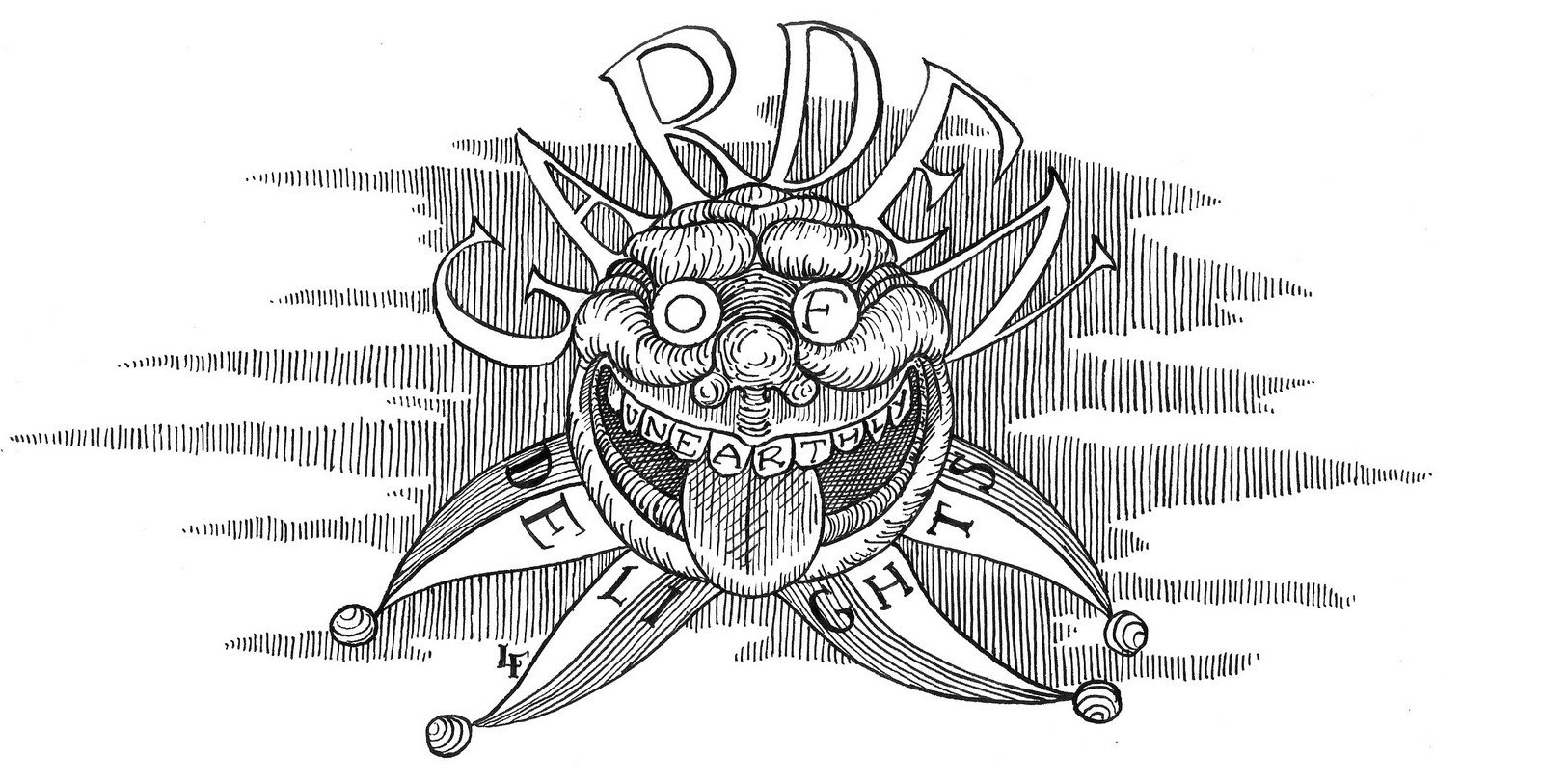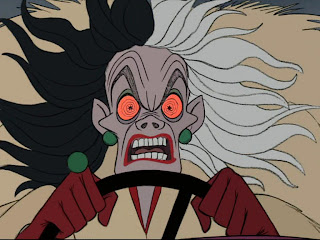A dissatisfaction with the engravings made from his drawings for early projects such as Gargantua and Pantagruel and Contes Drolatiques led Dore to train his own team of engravers. Of course, his own draughtsmanship improved over time as well. But I feel that many of his later illustrations lose some of their motion, as well as their energetic quality, precisely because they are more polished and finished than his earlier works. Despite this, several methods appear to be used in the illustrations intended to depict movement. In this post several illustrations from Dante's Inferno will be the subject of analysis.
The illustration seems almost to be split into two halves: the furies in the top half, and Dante and Virgil in the lower half. The two seem almost not to be completely connected, perhaps because the shape of the rock 'tower' in the background does not extend above the two poets. Only Virgil's raised hand, pointing to the furies, connects the two; the foot of the lowest fury disappears behind Virgil's hand. Perhaps in order not to draw attention to this overlap, the leg of the fury is somewhat faded, suggesting that the three flying figures to recede into the background.
But how far? At first glance the furies seem to be more or less the same size as Dante and Virgil (ie human-sized), but the manner in which they fade into the background, and the extent to which Virgil's pointing arm is foreshortened, suggest that they are further back than initially was apparent - I don't think this was deliberate; as I mentioned before, this particular illustration almost seems to be two compositions stuck together rather awkwardly. To give Dore the benefit of the doubt, we could argue that this was intended to suggest the erratic movement of the flight of the furies, bobbing up and down.
There is, however, a certain amount of movement here. First, the furies' bodies are tilted in one direction. Interestingly they move from right to left; it is generally thought that a composition that moves from left to right suggests faster movement, and perhaps progress (except in countries where writing moves from right to left; the two are related). Again, the decision that the Furies move in this direction may have been a conscious one, suggesting a certain amount of resistance to their clumsy, inelegant movements.
Second, and perhaps the more successful element of the image at conveying movement, is the mist in the background. Wisps of smoke are parallel to the furies, as though to speed along to their movement. Dore is here more successful at suggesting the movement within the group of figures rather than their journey; the detail of the wings causes them to appear static rather than flapping, but the angle and twist of the three figures suggests their writhing movement very well. It is because of this quality that this engraving remains among my favorite of Dore's Dante illustrations.
Note that this engraver (who has signed the illustration 'E. Sotain') has used less detail in an illustration depicting the punishment of the sorcerer, whose head is twisted around by malicious demons. Possibly for this reason, it seems to have been easier to convey movement in this composition, but there is a less finished look to the composition in comparison to many of the other illustrations in this set. Is movement therefore in expense to detail depicting texture, light and shadow? I don't know for sure, but there is undoubtedly more movement here than in the illustration of the furies.
Everything in the composition, save for the rock, forming the ground and the formation on the left, is in motion. As before, there is movement in the smoke in the background, adding chaos to the scene. The twisting, undulating shape of the smoke surrounding the sorcerer suggests that it is moving in a manner suggesting writhing snakes.
In the figures movement is suggested by shapes, lines and angles. The demons' forks' handles help to suggest the force applied, bowing as they lift the sorcerer, whose raised arm allows the curve of the topmost fork to be followed through into the line of his body. The twisting bodies of the demons also suggest the physical tension in the scene.
The illustration of sinners being chased by dogs through a gnarled forest is another good one for movement. Aside from the obvious factor of the running figures, I think movement is also suggested by the shape and angle of the trees; if they stood up straight, they would not complement the movement and speed of the running figures quite so well.
The movement in this illustration is suggested not only be the twist of the figures but by their position within the composition. The light falling on the figures causes a diagonal 'strip' to be highlighted across the composition. This is framed by curves formed in the foreground (the rocks in a darker shade) and in the background (the cliff over which the snakes spill). If this image were composed only of abstract light and dark shapes I think there would still be movement because of the shape and curve of these forms.
In this illustration, there is still contrast between light and shadow, but it does not produce overall shapes within the composition as distinctly as the previous illustration. However, this is successful at suggesting an atmosphere of complete chaos - movement is all over the place. Areas of concentrated shadow serve to pick out a few focal points, but they do not complement the movement.
Where Dore proves himself to be the most skilled is at drawing the human form; he is able to twist it into all sorts of forms to suggest force, strength and movement. It still amazes me (and very jealous) to learn that he never had any art training, and never drew from life. The theatrical manner in which many of the illustrations are lit often produces curving shapes of light and dark that complement the movement within a composition, whether sweeping, twisting or writhing.

















